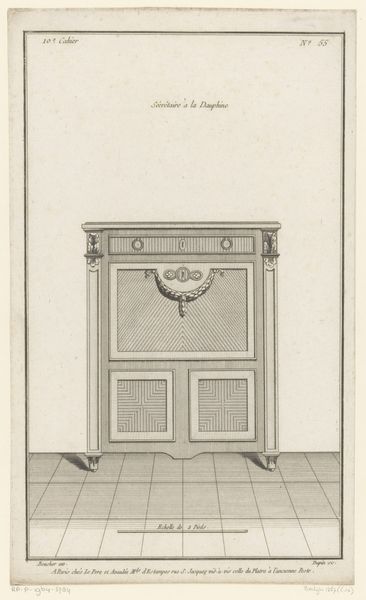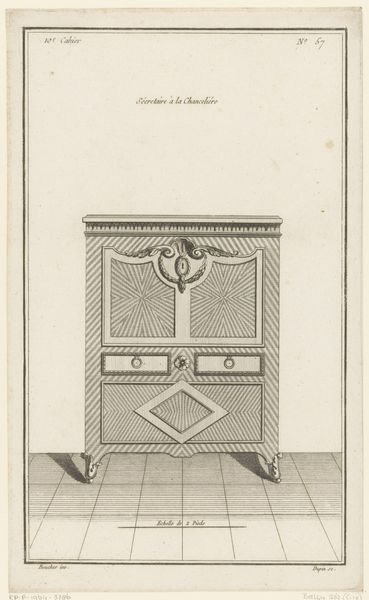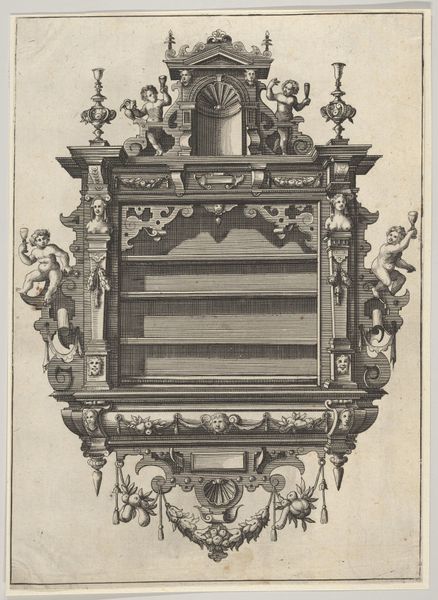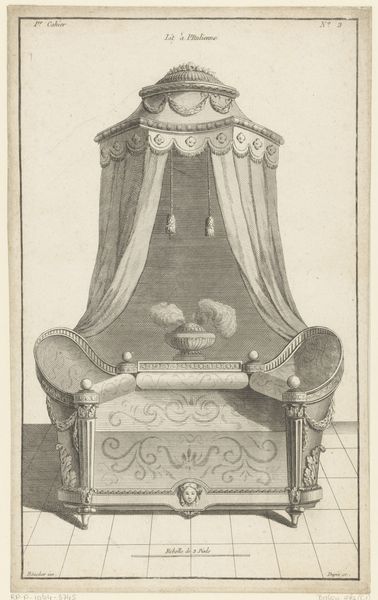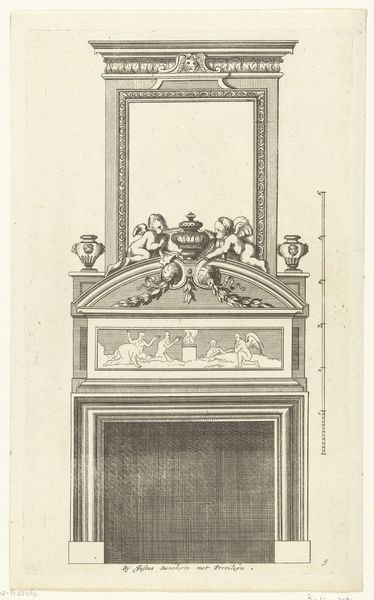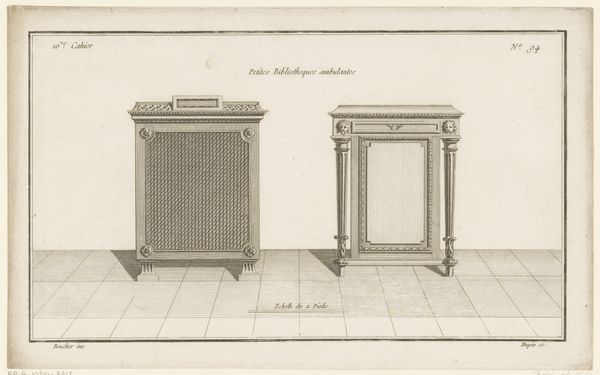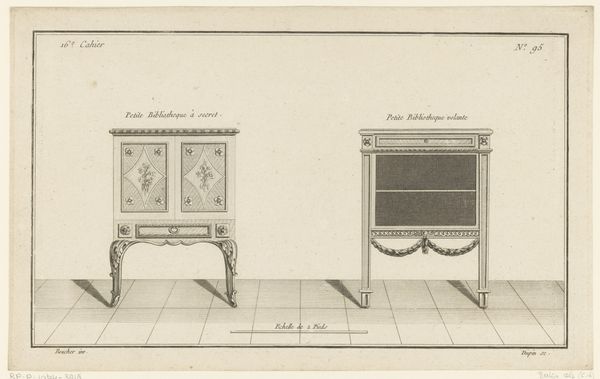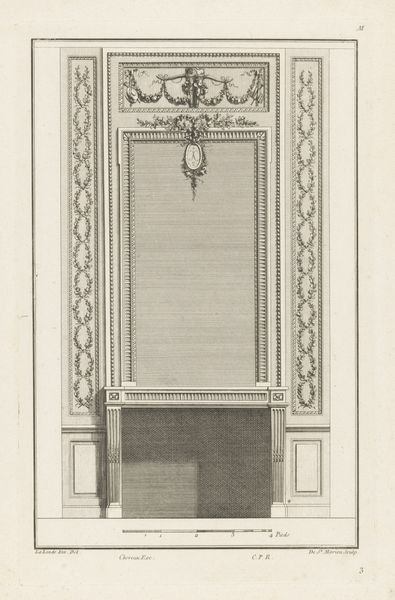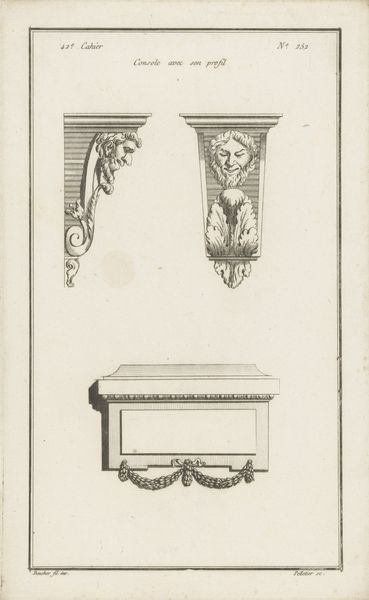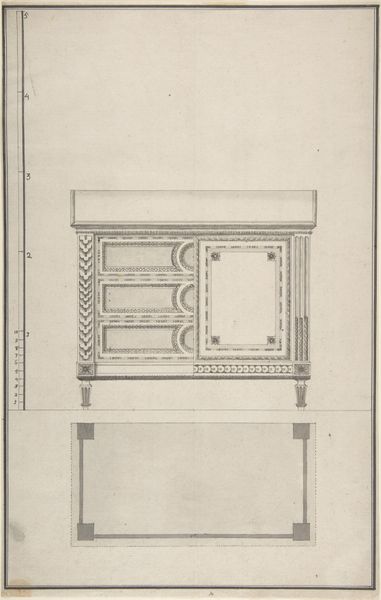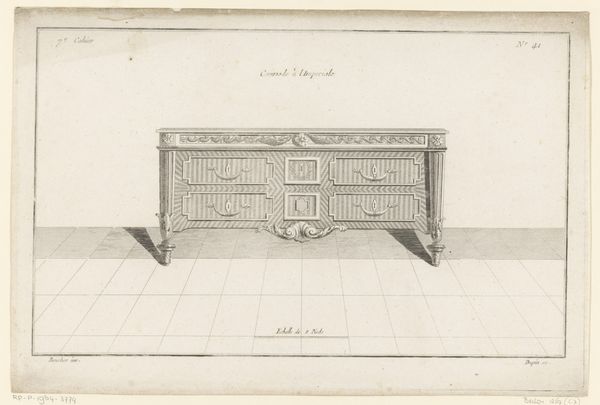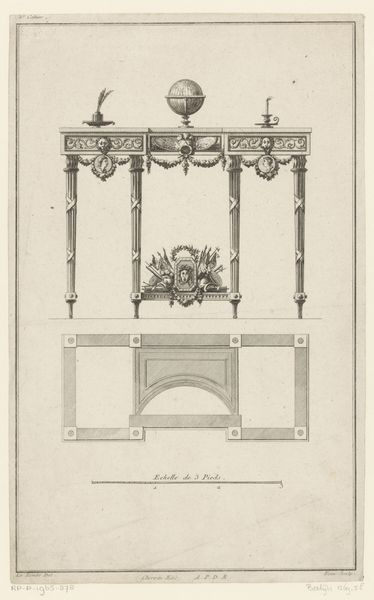
drawing, print, engraving
#
drawing
#
neoclacissism
# print
#
form
#
geometric
#
line
#
decorative-art
#
engraving
Dimensions: height 328 mm, width 200 mm
Copyright: Rijks Museum: Open Domain
Curator: This engraving, entitled "Secretaire met masker", roughly translated as "Secretaire with a Mask," was created sometime between 1772 and 1779 by Nicolas Dupin. It now resides in the Rijksmuseum. Editor: It gives off a severe, almost clinical air, doesn’t it? The meticulous lines, the limited tonal range. Despite its function as decorative art, it feels very…formal. Curator: Indeed. Dupin's engraving is a testament to the Neoclassical obsession with order and proportion. Consider how the piece's title highlights not the *utility* of the secretary but a decorative *mask*, effectively drawing attention to a form of objectification by diverting and rechanneling utility toward aesthetic engagement. Editor: Right. The mask becomes a symbol then, an imposition of identity rather than its expression. Is the design reinforcing the aristocratic consumption habits of that period? Curator: Absolutely. The very presence of such an item—a specialized piece of furniture—speaks to the social and economic stratification of the time. These objects weren't simply functional; they performed identity, signalling status and belonging within exclusive circles. Editor: And those geometric shapes; those radiating sunbursts—they aren't simply decorative. They speak to control and dominance and this visual motif appears as pure ornamentation at the expense of something like 'personal freedom' represented here by design. The artist here is an interesting early messenger that speaks across years of material desire, taste, wealth and design as they can combine to restrict or erase autonomy of identity. Curator: Precisely. And even the choice of engraving itself plays a role. As a reproductive medium, it allowed these designs to be disseminated, reinforcing those standards and solidifying taste amongst a broader, yet still elite, audience. Editor: Thinking about it through a feminist lens, that mask at the top takes on new meanings, doesn’t it? Perhaps, instead of pure aesthetics, it becomes an emblem of a patriarchal control. And this period represents also the consolidation of that order that must be deconstructed today. Curator: It prompts a powerful question, and this resonates within the historical context where notions of gender, representation, and control were constantly contested and performed in very similar ways by high society across western Europe at the time. Editor: This piece speaks quietly and perhaps not very openly. Yet its social commentary can teach viewers of contemporary theory today of design choices when consumerism must come second in social order after liberty. Curator: Agreed, and that reflection only enriches our understanding.
Comments
No comments
Be the first to comment and join the conversation on the ultimate creative platform.
